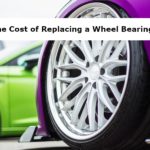9 Easy Ways to Increase Car’s Horsepower (+30 HP)
The secret to making your car faster is to increase airflow in and out of the engine. Your vehicle is just one big air pump.
Typically, all you need to do is move air in greater volume, and there you have a fast car. It’s simple, really.
As a gearhead, the techniques discussed below are some of my favorites to squeeze more than 30 hp out of the engine.
Without much ado, here is how to get more hp in a car.
How to More Horsepower to your Vehicle?
To safely add more horsepower to your vehicle, you need to:
- Use Performance Exhaust
- Try a Supercharger and Turbocharger
- Reprogram You Car’s Computer
- Buy a Cold Air Intake
- Use Water/ Methanol Injection Kit
- Overhaul Engine or Conversion
- Get Nitrous Kit
- Swap the Catalytic Converter
- Change to a Throttle Body with a Larger Diameter
Let’s get into details.
1. Use Performance Exhaust
Current stock exhaust setups seem to improve with every new generation of autos. But if you are like me, the factory exhaust is not going to cut it. There’s always that aftermarket device that excels.
The original just doesn’t expel sufficient volumes of exhaust, and it is not fast enough. The vehicle has to exhale carbon monoxide fast so that it can take in more oxygen.
The factory exhaust still has some distance to cover, which is where the performance exhaust comes in. Typically, the aftermarket unit is probably the easiest and the most budget-friendly method to push the engine to the limit.
But the exhaust components added have one caveat. They are loud.
I find them to be at least louder than the original exhaust, but I am yet to find someone complaining.
As for any petrolhead, the louder and the faster the automobile, the better.
But for how much gain in horsepower?
Some mention figures such as 20 hp, and others say it can add up to 10%. Do your own digging so that you are not disappointed.
I’ve got a list of the best 300HP+ cars under $20k. Read it here.
2. Try a Supercharger and Turbocharger
Forced induction systems provide the engine with denser gas and provide some of the most satisfying power gains.
By forcing in more air, the engine can mix more fuel and produce more power. Anything in the range of 50% additional power is more than excellent, in my opinion. That means upwards of 30 hp is achievable with this mod.
Superchargers do need an intercooler. This means more space and reduced chances of breakdowns or issues with heat.
I find the supercharger more gratifying when I step on the gas than some of the other methods. While the upgrade is easy, it needs a heavier wallet.
Try the supercharger if you have a 6-cylinder engine, as opposed to a four-cylinder engine. This is because it is belt-driven.
Read it: Why are Diesel Engines so Noisy (Explained)
3. Reprogram Your Car’s Computer
Add a bit more juice to your car on the highway by reprogramming its computer. But the extent of the gains pretty much depends on the engine you have.
The additional horsepower can be as little as five hp or as much as 40 hp.
Modern cars are tuned conservatively to reduce any stress on various components and allow for lower-grade fuels.
The aftermarket software beefs up the ignition timing to smoothen out power delivery. Typically, the engine control unit works best with turbochargers. More boost pressure from the turbocharger translates to improved performance.
A word of caution. Don’t just purchase the device from anyone you come across. Look for reputable vendors with good reviews. I prefer recommendations from friends that have had some experiences on the same.
4. Buy a Cold Air Intake
Working on the vehicle’s intake has to be one of my favorite ways to beef up the horsepower. The method is easy and sometimes effective.
Unlike most of the other components, original intakes in modern cars are up to the mark. But there are times the engine will benefit by using a better aftermarket intake.
The device works its magic by allowing easier breathing through a free-flowing air filter. But installing the cold air intake by itself is not sufficient. You also need an aftermarket heat shield to prevent air from going to the engine and making the adjustments null.
The cold air intake can add as much as ten hp. But with other additional performance mods, +30 is very much possible.
Trending Video: How to Easily Bring Back to Life any Old Car Battery and Save Tons of Money (click to watch)
5. Use Water/ Methanol Injection Kit
A water-methanol injection kit uses a high-pressure pump to inject a 50-50 blend of water and methanol. The mixture works well in supercharged and turbocharged applications by improving boost potential and ignition timing.
The secret to the success of this system is in the effectiveness of methanol, a high octane fuel that absorbs heat to have a cooling effect. Also, since the fuel is highly resistant to detonation, it leads to a safe boost in power. Does it make any sense?
The water-methanol injection kit allows for more aggressive timing and boosts without worrying about detonation, which may damage the engine. But is it an expensive kit?
The system starts at $300, and it is what I call economical in the streets if you have a high compression engine. With a water/methanol system, you can expect an increase of more than five psi. Horsepower gains of up to 10% or around 15 hp are possible with naturally aspirated engines.
6. Overhaul Engine or Conversion
I mentioned that modern cars are conservatively tuned to avoid stressing the internal engine components. But there is a solution.
An engine overhaul to transform it into a performance juggernaut is an excellent option for anyone looking to add performance to the vehicle.
The process entails rebuilding the engine by adding crucial beefed-up components such as a stroker crankshaft, upgraded pistons, and cylinder heads. If you don’t have the skills to do it yourself, it’s best to let experienced builders do it for you.
An engine overhaul can push the horsepower as much as 40 hp.
Some people aren’t too thrilled with making engine overhauls, even after running out of the other bolt-on options. So what do you do in such a case?
I consider an engine conversion as the next best alternative after an engine overhaul. You don’t have to gash the engine apart, but rather, swap in a better motor. But how easy the process is depends on the engine you have.
Do some investigations before you go ahead with the process.
400 hp car for less than $30k? See the list here.
7. Get Nitrous Kit
The nitrous kit is one of my favorites based on several factors. For example, it is portable, and I can use it in one car now and in another the next day. The kit is an air-maker as it creates more air for engine combustion. The result is more power.
Get the most satisfying results by combining the nitrous kit with a supercharger or turbocharger. There is less lag, and the final power output is much more improved. We are talking of more than 30 hp.
The nitrous kit can cost upwards of $3000 and can run you into trouble in some states.
Read it: 5 Serious Reasons Why You Shouldn’t Fuel up with Car on
8. Swap the Catalytic Converter
Switching to a high-flow catalyst improves the flow of gasses to increase combustion. The catalytic converter has a better honeycomb design for improved airflow.
But the horsepower gain depends on the previous catalytic converter. You can enjoy horsepower gains of up to 30 if your car is old and has a restricting catalytic converter. Newer vehicles will almost always have good quality catalytic converters, and changing to an aftermarket device may not change much.
9. Change to a Throttle Body with a Larger Diameter
Without a doubt, sufficient air is necessary for combustion. The throttle body determines how much air enters the engine for it to fire correctly.
Usually, a throttle body with an oversized diameter and bigger flaps will allow more air into the engine. And more air into the engine means better performance on the highway. But how much hp are we talking about?
The surge in engine power can be as much as 25hp, or even up to +30, depending on the engine. Adding a throttle body spacer as well will help squeeze more performance from the engine.
Is Increasing Your Car’s Horsepower Always Safe?
If you want to increase your horsepower by 10-20 HP, it should be safe for most cars. However, most engines aren’t designed to add more horsepower, so if you’re not experienced, you better ask some specialist if your car could handle more horsepower.
The safe increase might mean upwards of 10-20 hp, depending on the engine. Some bolt-on mods will stress the engine if it’s an older model, and anything can happen to it.
Furthermore, some modifications may not be compatible with your type of engine, resulting in losses with nothing gained in horsepower. Adding more power to an engine that wasn’t designed for it can cause problems. The additional heat, speed, and combustion can be too much for some engines, resulting in a safety issue.
As mentioned earlier, do your research and know how much you stand to gain with a specific mod. People that have done it with your type of engine are in a better place to tell you what to expect.
If you’re not good with the spanner, let more experienced people handle it, and it will save you a lot of disappointment. You never know. It can also save your life.
Will Your Car Consume More Fuel After Increasing Horsepower?
Your car will consume more fuel after increasing horsepower. It depends on how many more horsepower you will have. In most cases, you should notice that your car will consume 5-10% more fuel, because of more power.
Horsepower is the speed at which an engine converts fuel into energy. In calculations, it is a function of the engine speed and engine torque. The torque is how much of the work your engine needs to do.
A water wheel used to generate power has enormous torque and less horsepower or speed. If you were to increase this speed, you would need more energy and fuel. The same case happens with your vehicle.
Vehicle manufacturers often optimize the torque and horsepower depending on the application. For example, a farm tractor and a performance vehicle can have similar torque and horsepower. However, the tractor will take longer to reach the maximum horsepower than a performance vehicle.
High horsepower is helpful in applications such as high-speed racing. But it is not economical in a family car.






